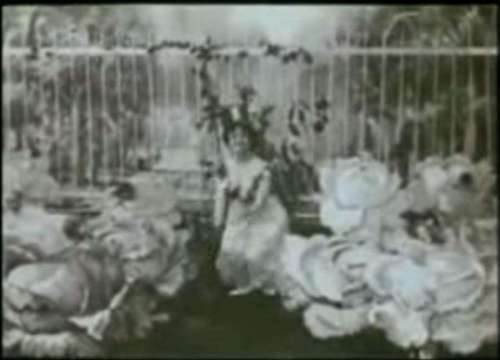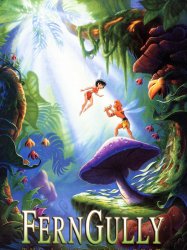The Cabbage-Patch Fairy is a french film of genre Fantasy directed by Alice Guy-Blaché with Alice Guy-Blaché
The Cabbage-Patch Fairy

If you like this film, let us know!
- Infos
- Casting
- Technical infos
- Photos
- Videos
- Film quotes
- Characters
- Music
- Awards
La Fée aux Choux (The Cabbage Fairy) is one of the earliest narrative fiction films ever made. It was probably made before the first Méliès fiction film, but after the Lumière brothers' L'Arroseur Arrosé. The confusion stems from the uncertainty in the dating of these three films. Many film historians have accepted that La Fée aux Choux was made in April 1896, just a month or two before Méliès made his first fiction film. L'Arroseur arrosé (generally considered the earliest fiction film) was screened in December 1895.
La Fée aux Choux is sixty seconds long, possibly making it the earliest known film with a running time of at least one minute.
The film is based on an old and popular French (and actually, European) fairy tale. According to it, baby boys are born in cabbages, and baby girls are born in roses.
Alice Guy Blaché, the director of La Fée aux Choux, is one of the early cinema's most important figures, and had an extensive career as a director, producer and studio owner, working in both France and the United States.
In a remake called Sage-femme de première classe (Midwife to the Upper Classes) from 1902, Guy Blaché appears, dressed as a man.
Synopsis
Dans un jardin, une fée se penche sur des choux immenses. Elle en sort comme par magie un, puis deux nouveau-nés qui gigotent, puis un troisième figuré par une poupée, qui sont successivement déposés à terre, donnant ainsi foi à la légende du folklore français selon laquelle les petits garçons naissent dans les choux et les petites filles dans les roses.Actors
Comments
Leave comment :
Suggestions of similar film to The Cabbage-Patch Fairy
There are 2 films with the same actors, 78 films with the same director, 6123 with the same cinematographic genres, 1378 films with the same themes (including 76 films with the same 2 themes than The Cabbage-Patch Fairy), to have finally 70 suggestions of similar films.If you liked The Cabbage-Patch Fairy, you will probably like those similar films :

Midwife to the Upper Class (1902)
, 3minutesDirected by Alice Guy-Blaché
Origin France
Genres Fantastic, Fantasy
Themes Films about magic and magicians, Les fées
Rating51%





Un couple de jeunes mariés s'approche d'une boutique pour le moins singulière puisque l'on y vend des bébés ! Une discussion s'engage entre eux au cours de laquelle le jeune homme se laisse convaincre. La marchande présente divers poupons mais aucun ne semble faire l'affaire. Il est temps de passer à la réserve : c'est un potager rempli de nombreux choux. La marchande se penche vers les légumes pour y récolter de nombreux bébés bien vivants : les clients sont difficiles à satisfaire. Le choix enfin fait, l'homme sortira son bas de laine (au sens propre) pour payer son dû.

Spain (1906)
, 10minutesDirected by Alice Guy-Blaché
Origin France
Genres Documentary
Themes Dance films
Actors Alice Guy-Blaché
Rating61%





Le film est un ensemble de vues cinématographiques de l’Espagne pour la plupart composées de lents panoramiques horizontaux :

Destroy All Monsters (1968)
, 1h29Directed by Ishirō Honda
Origin Japon
Genres Science fiction, Thriller, Fantasy, Action, Adventure, Horror
Themes Films about animals, Dinosaur films, Space adventure films, La fin du monde, Kaiju films, Films about magic and magicians, Seafaring films, La préhistoire, Transport films, Sur la Lune, Films set in the future, Animaux préhistoriques, Films about spiders, Films about insects, Films about dragons, Films about extraterrestrial life, Les fées, Giant monster films, Space opera, Godzilla films, Films about extraterrestrial life, Alien invasions in films, Disaster films
Actors Yoshio Tsuchiya, Haruo Nakajima, Yukiko Kobayashi, Kenji Sahara, Akira Kubo, Andrew Hughes
Rating64%





At the close of the 20th century, all of the Earth's kaiju have been collected by the United Nations Science Committee and confined in an area known as Monsterland, located in the Ogasawara island chain. A special control center is constructed underneath the island to ensure that the monsters stay secure, and to serve as a research facility to study them.
 , 1h14
, 1h14Origin USA
Genres Musical theatre, Fantasy, Animation, Romance
Themes Films about children, Films about magic and magicians, Films about the labor movement, Time travel films, Les fées, Musical films, Children's films
Actors Jennifer Hale, Lola Sanchez, Christopher Daniel Barnes, Susanne Blakeslee, Lesli Margherita, Corey Burton
Rating60%





At the Tremaine mansion, Cinderella's stepsisters Anastasia and Drizella are bitterly doing Cinderella's old chores. Anastasia wanders off to avoid work and stumbles upon a picnic being held by Cinderella, Prince Charming and the Fairy Godmother to celebrate Cinderella and the Prince's one-year anniversary. When the Fairy Godmother drops her wand, Anastasia takes it, and in the ensuing struggle Anastasia accidentally turns the Fairy Godmother to stone. Anastasia flees the scene, taking the wand to her sister and mother.

Ebirah, Horror of the Deep (1966)
, 1h27Directed by Jun Fukuda
Origin Japon
Genres Science fiction, Fantasy, Action
Themes Films about animals, Dinosaur films, La fin du monde, Kaiju films, Films about magic and magicians, Seafaring films, Films about music and musicians, La préhistoire, Films about terrorism, Transport films, Animaux préhistoriques, Films about insects, Les fées, Giant monster films, Musical films, Godzilla films, Films about extraterrestrial life, Disaster films
Actors Akira Takarada, Kumi Mizuno, Akihiko Hirata, Hideyo Amamoto, Tōru Watanabe, Haruo Nakajima
Rating55%





After Yata (Toru Ibuki) is lost at sea, his brother Ryota (Toru Watanabe) steals a yacht with his two friends and a bank robber, the crew runs afoul of the giant lobster Ebirah, and washes up on the shore of an island, where a terrorist organization manufactures heavy water for their purposes, as well as a chemical that keeps Ebirah at bay. The organization, known as the Red Bamboo, has enslaved natives from Infant Island to help them, but the natives hope to awaken Mothra (now a full-grown moth metamorphosed from the larva that appeared in Ghidorah, the Three-Headed Monster) to rescue them.

Barbie Mariposa (2008)
, 1h15Origin USA
Genres Drama, Fantasy, Adventure, Animation
Themes Jeu, Films about magic and magicians, Les fées, Films about toys, Children's films
Actors Chiara Zanni, Tabitha St. Germain, Alessandro Juliani, Rafaèle Moutier, Nicole Oliver, Jessica Monceau
Rating61%





Bibble is worried that he will embarrass himself and won't belong with his friend's friends, so Elina tells him the story of Mariposa, a butterfly fairy who lives in a far-off palace called Flutterfield, an island kingdom in Fairytopia populated by fairies with butterfly wings. Henna, the jealous butterfly fairy and the attendant of the queen of Flutterfield, has poisoned the queen in an attempt to take over the kingdom. Due to this, the lights are in danger of going out if she succumbs to the poison. These lights protect Flutterfield from the "Skeezites", monsters who eat butterfly fairies and are repellant to light. It is up to Mariposa and her employers/friends, sisters Rayna and Rayla, to find an antidote to save the queen.

Mothra vs. Godzilla (1964)
, 1h29Directed by Ishirō Honda
Origin Japon
Genres Drama, Science fiction, Fantasy, Action, Adventure, Horror
Themes Films about animals, Dinosaur films, La fin du monde, Kaiju films, Films about magic and magicians, Seafaring films, La préhistoire, Transport films, Animaux préhistoriques, Films about insects, Les fées, Giant monster films, Godzilla films, Films about extraterrestrial life, Disaster films
Actors Akira Takarada, Yuriko Hoshi, Hiroshi Koizumi, Yu Fujiki, Kenji Sahara, Haruo Nakajima
Rating65%





News reporter Ichiro Sakai and photographer Junko Nakanishi take pictures of a wreckage caused by a typhoon. They uncover a strange, bluish-gray object in the debris, not knowing its significance. Later that day, a giant egg is discovered on the shore. The local villagers salvage it, and an entrepreneur of Happy Enterprises named Kumayama buys the egg from the local villagers. Instead of letting scientists study the egg, Kumayama wants to make it into a large tourist attraction. Later, Sakai and Nakanishi are informed that the strange object they found is extremely radioactive. (It is later hinted that this is a skin particle from Godzilla.
 , 1h32
, 1h32Directed by Ishirō Honda
Origin Japon
Genres Science fiction, Thriller, Comedy, Fantasy, Action, Adventure
Themes Films about animals, Dinosaur films, La fin du monde, Kaiju films, Films about magic and magicians, Seafaring films, La préhistoire, Transport films, Animaux préhistoriques, Films about insects, Films about dragons, Les fées, Giant monster films, Godzilla films, Children's films, Films about extraterrestrial life, Disaster films
Actors Yuriko Hoshi, Akiko Wakabayashi, Hiroshi Koizumi, Haruo Nakajima, Takashi Shimura, Akihiko Hirata
Rating65%





Police Detective Shindo (Yosuke Natsuki) is assigned to guard Princess Selina Salno of Selgina (Akiko Wakabayashi) during the Princess' visit to Japan, due to a suspected assassination plot. Although Shindo is smitten with Selina's photograph, her plane never makes it to Japan, as it is destroyed by a bomb en route. At exactly the same time a meteorite shower draws the attention of Professor Murai (Hiroshi Koizumi), who along with his team of scientists strikes out into the wilderness to examine the largest of the meteors, which has magnetic properties.

The Magic Voyage (1992)
, 1h21Origin German
Genres Fantasy, Adventure, Animation
Themes Films about magic and magicians, Les fées, Children's films
Actors Michael Habeck, Hans Paetsch, Mickey Rooney, Phil Nibbelink, Dom DeLuise, Corey Feldman
Rating35%





The year is 1492. Many people believed that the world was flat, and that ships would fall off the edge of the earth and float off into space. However, an Italian navigator named Christopher Columbus had a revolutionary idea — he thought that the world was square. That is, until a small woodworm named Pico overhears him and convinces Columbus that the world is really round by eating up the edges of his square globe, making it look round. Finally realizing that the world is round, Columbus decides to take his discovery to King Ferdinand and his wife Queen Isabella. Pico joins him, and the duo instantly become friends.
 , 1h15
, 1h15Directed by William Kroyer
Origin Australie
Genres Drama, Science fiction, Thriller, Fantasy, Adventure, Animation
Themes Environmental films, Films about magic and magicians, Seafaring films, Transport films, Les fées, Children's films
Actors Jonathan Ward, Samantha Mathis, Tim Curry, Christian Slater, Robin Williams, Grace Zabriskie
Rating64%





Crysta is a fairy with a curious nature living in FernGully, a pristine rainforest free from humans. The fairies of FernGully once lived in harmony with humans, but believe them to have gone extinct after being driven away by a malevolent spirit named Hexxus. Crysta is the apprentice of Magi, a motherly-figure fairy who imprisoned Hexxus in a tree. One day Crysta explores a new part of the forest and meets Batty, a bat who claims to have been experimented on by humans, giving him an unstable personality. She refuses to believe him until she encounters lumberjacks cutting down trees. She sees Zak, a young human whom Crysta accidentally shrinks when she tries to save him from being crushed by a falling tree, though does not know how to restore him to normal size.
 Connection
Connection
